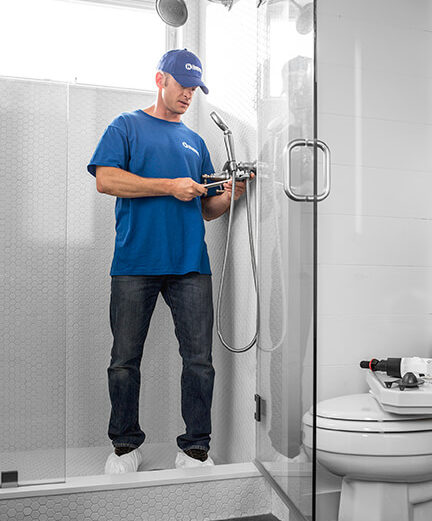We offer a wide range of services for that fresh look, or just maintenance or updates to keep your home functioning and safe. Regardless of the size of the job, we have a craftsman that can tackle it.

Home Improvement / June 26, 2020

Do your energy bills seem to be a little higher than they should be? If so, it may be due to small gaps and cracks throughout your home that could be letting cold air in and warm air out, or vise versa. These tiny gaps develop over time in areas where two different materials meet and due to the varying expansion and contraction rates of the materials. Luckily, this problem can be fixed easily and pretty inexpensively by applying caulking and weatherstripping.
The first step to know when deciding where to apply new caulk or weatherstripping is to determine where the air is leaking. A cold draft that’s coming in under the door or through a window can be felt as you walk by, so you know where to apply it, but other leaks are less noticeable. As mentioned, leaks most often occur where two different surfaces adjoin each other. Knowing this, be sure to thoroughly examine the following areas.
Caulk will be most effective when used to seal the gaps between two non-moving surfaces that are ¼-inch wide or less. Caulk generally comes in a tube that’s inserted into and applied with a caulking gun, though it also comes in other forms based on the application. Additionally, caulk comes out as a thick paste that, when dried, is airtight and waterproof. Caulk is also an important tool for preventing water damage around drains, faucets, water pipes, bathtubs, and other plumbing fixtures.
Weatherstripping is most commonly used to seal gaps between movable surfaces, such as an exterior door and its frame, the bottom of a door and the threshold, or a window and its frame. The simplest (and least expensive) type of weatherstripping is an adhesive-backed foam tape that is easy to apply on your own. While this will eventually wear down or peel off allowing air to penetrate your home, so be sure to check it regularly. More permanent solutions such as nail-on weatherstripping are also available for use.
You can count on the professionals at Handyman Connection of Charleston to assist with all of your home maintenance needs. Give us a call to get started with a an estimate!